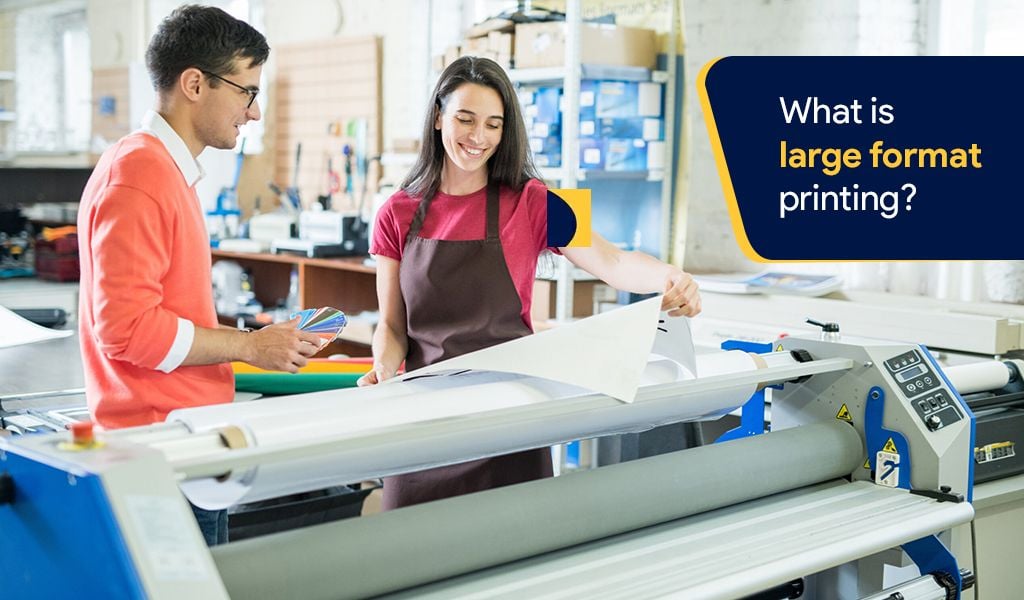What Is Large Format Printing?
)
If you're wondering what large format printing is, you've come to the right place. We've compiled a guide covering some of the more important topics you need to know about large format printing.
What is large format printing?
Large format printing, which is also referred to as 'wide format printing', is a type of digital printing.
Consider it not unlike an inkjet printer but on a larger scale, capable of handling much larger products. It produces high quality prints on your material of choice. No details are overlooked, with even the finer aspects of design impeccably replicated.
Maybe you're wondering whether you've ever come across a large format print in your everyday life. For most of us, we encounter them almost daily. For example: billboards, large cutouts (such as life size cutouts) and printed wrapper paper.
Large format printing is particularly valuable for these types of products because they're generally used in locations where they're exposed to the elements for long periods of time. More suitable materials and finishes are used to help maintain quality and reduce the impacts of the environment on the print.
How does large format printing work?
Large format printing is a relatively new and modern technology. Prior to it's invention, large prints required a fair amount of manual labour. The process involves printmakers setting colours, positioning each print by hand and cleaning the printer between each run. In order to create extra-large prints, they were printed in sections and then stitched together.
Even with the growth of technology, extra-large billboards still require several prints put together, however, they do tend to be larger individual pieces than they used to be. Regardless, the innovation of large format printing has streamlined the process and minimised required times greatly.
One instance in which time is saved with large format is that there's no longer the need to manually clean the printer between uses or to manually set up the job. The end result is a major impact on the overall production time required and a lower cost.
How is large format printing used?
Some of the most popular products printed through large format printing include wallpapers, billboards, architecture plans and exhibition stand displays.
Depending on what you're looking to print, there's also a variety of different materials outside of regular paper available for printing. You can spruce up your printing product with vinyl, mesh, canvas or cardboard.
The colour of your print is generally sprayed onto the surface of the material, so this allows you to add some texture to your print, creating an interesting and eye-catching edge to your product.
How can I print a large format product?
In order to prepare a file for large format printing, consider at what distance the print is going to be viewed. This will affect the dots per inch resolution required.
If the viewing will take place at a relatively close distance, it's important to consider whether the print file is detailed enough. For close view, a 300 dot per inch (dpi) resolution should be sufficient in order to produce the print in a way that's effective and maintains the integrity of the image.
To ensure your print file is prepared correctly, consult one of the printing experts at Snap New Zealand to help.
When you're ready to go big, reach out to our team to help you produce an extra-large masterpiece for your business or yourself!
Experience the difference our printing services can make for you, whether it's for a special occasion or for growing your business, we can help you succeed - contact the team at your local Snap New Zealand.
| Tags:General News |
)



